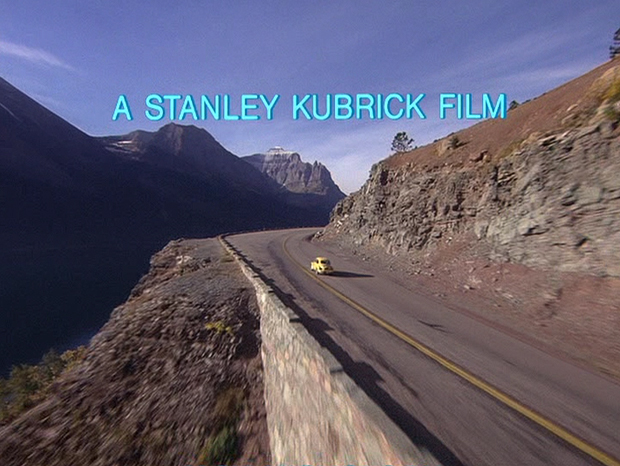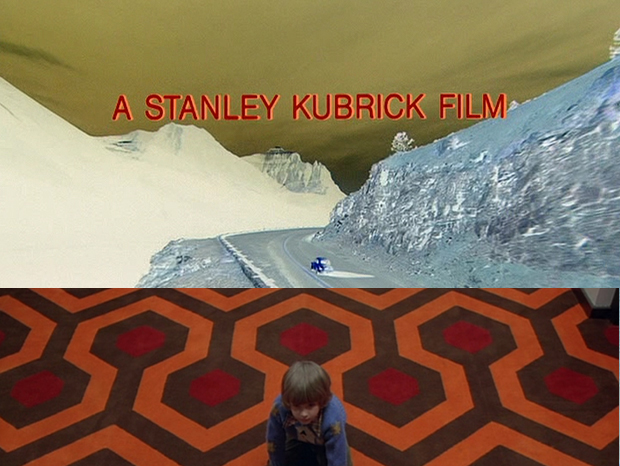STANLEY KUBRICK'S THE SHINING

Go to TOC for this film ( (which has also a statement on purpose and manner of analysis and a disclaimer as to caveat emptor and my knowing anything authoritatively, which I do not, but I do try to not know earnestly, with some discretion, and considerable thought).
Jack Nicholson - Jack Torrance
Shelley Duvall - Wendy Torrance
Danny Lloyd - Danny
Scatman Crothers - Dick Hallorann
Barry Nelson - Ullman
Philip Stone - Grady
Joe Turkel - Lloyd
Anne Jackson - Doctor
Tony Burton - Durkin
Barry Dennen - Watson
Stanley Kubrick and Diane Johnson - Screenplay (Based on Stephen King's novel)
Wendy Carlos and Rachel Elkind - Music
John Alcott - Director of photography
Leslie Tomkins - Art Direction
USA release date 23 May 1980 ad 13 June 1980
For complete listing see IMDB.
THE OPENING
TOC and Supplemental Posts | Part 1 - The First Ascent | Part 2 - The Interview | Part 3 - Closing Day
| Part 4 - A Month Later | Part 5 - Tuesday | Part 6 - Thursday | Part 7 - Saturday | Part 8 - Monday
| Part 9 - Wednesday Part One | Part 10 - Wednesday Part Two | Part 11 - 8 AM | Part 12 - 4 PM
| Films Home
LINKS TO SECTIONS OF THE ANALYSIS ON THIS PAGE:
The First Ascent Up The Mountain, Shots 1 through 8
As Above So Below
Rorschach Blots and Mirror Reversals
Shining in the Shining Mountains
Vanishing Points
The Rainbow Arch
The Nietzsche Stone
Dies Irae
A Side Trip on the Trivial Incidental of the Helicopter and then Back to Thoughts on "Dies Irae". The 1974 film Himiko and its possible relationship to why we view the helicopter.
Why The Shining After All
Why Study the Film in Relationship to the Music
Why Study the Locations. Links to the locations observed in the ascent. St. Mary Lake. Serpentine bends. Crossing the field. Helicopter takes a pass. Entering the west tunnel. The east tunnel (not used in the film). After the west tunnel. Last shop of Glacier Park in the opening.
Examining the Labyrinth Hidden in the Ascents
The Yellow VW
Does The Opening of The Shining Perhaps Pay Homage to L'Inhumaine?
In Review, What has Kubrick Given Us in This Section?
What's the Teaser Candy Bait?
What' s the Food forThought?
What's the Deep Infrastructure?
2012 note: Am updating this in February of 2012, remaining close to the frame and themes of the 2009 version but augmenting and incorporating other ideas I've explored over the past few years, not wanting to alienate that information in only new posts.
THE FIRST ASCENT UP THE MOUNTAIN
AS ABOVE, SO BELOW
First, respect for the beauty and terror that is raw nature.
1 Aerial shot. (00:15 to about 00:32 begin crossfade to 00:35.)
A startling opening. Solemn, ominous horns, camera quickly zooming in on, and over, a slim isolated island in a lake shielded by high, barren canyon walls reflected in the lake, nature removed from the contextual sounds of the natural, the horns building a psychic mood that places the scene instead in context with the yet to be seen Overlook Hotel that will be as isolated as this solitary island. The shot is as symmetrical as nature allows in such a setting. The island situated before a distant mountain both anticipates and highlights it, a tall tree on the island forming a natural peak that gives the island the silhouette of the pyramidal mountain in the distance. This is nature as the Overlook Hotel and introduces as well the idea of naturally occurring patterns (though perspective is all here).
As above, so below.
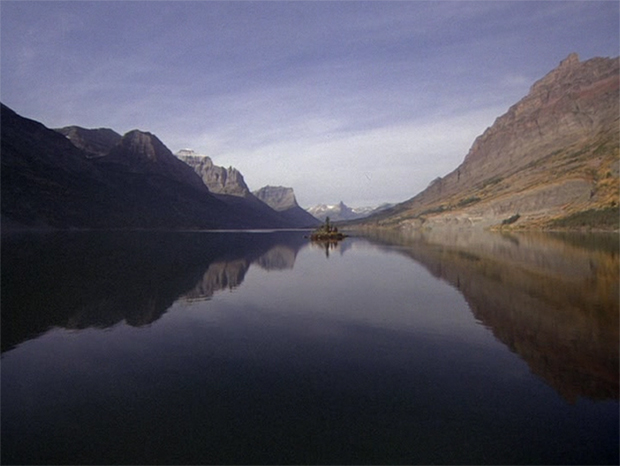
Fig. 1 - The opening flyover of St. Mary lake at Glacier National Park.
See the location and how it looks today.
RORSCHACH BLOTS AND MIRROR REVERSALS
We see in the lake's mirroring effect, especially to screen right, an image that reminds of a Rorschach ink blot. A Rorschach ink blot is perfectly symmetrical and the story that arises from it depends upon interpretation of a doubled image. Here, the Rorschach effect is caused by the water of the lake mirroring the mountains, sky and clouds. With a Rorschach ink blot, if we isolate one side and remove the mirror image, the feeling is had that we are only getting half the story. The mirror is required. Just as when we look at an illustration of a human body that only shows the left half, we must have the mirroring right for the image to be a whole. Which sounds so simplistic as to be passed over, but to pass that information over is to miss half the film.

Fig. 2 - Veering to the right, toward the Going-to-the-Sun road.
As the opening shot closes in on the crossfade that will take us into the 2nd shot, the helicopter/camera anticipates when it will pass the VW in the 4th shot, veering toward and moving in the direction of the spot on the Going-to-the-Sun highway where it will enter its closest approach with the car as the credits begin.
Symmetries and Doublings
Symmetries and doublings are often used by Kubrick, which I discuss at great length especially in my analyses of his early works. One of the more compelling symmetries of Kubrick is at the end of 2001 as the camera zooms in on the monolith. In The Shining, Kubrick chooses to begin with zooming in on a roughly symmetrical landscape that is reinforced with the perfectly mirrored symmetry of the scene in the water. Later, there are photographs and a painting that show Mount Hood, and in these images, which Kubrick chooses to use on the walls of the Overlook, the effect of mirrored symmetry in the lake before it is not employed.
SHINING IN THE SHINING MOUNTAINS
This lake in the opening is St. Mary lake, filmed in Montana at the Glacier National Park. This screenshot I made from Google maps street view shows the same lake and Wild Goose Island and the location on the Going-to-the-Sun road. Montana is also known as the Land of the Shining Mountains, so Kubrick is making use of a location that has, in part, the same name as the movie, and may even suggest that not only individuals and the hotel may shine, but nature itself and the mountains in which the Overlook is embedded.
2 Crossfade. (00:35 Crossfade ends, continue to 00:52.)
The camera begins to curve to the right then crossfades to a high aerial shot tracking a lone car that travels a thin serpentine road through dense forest, anticipating the high overviews we will later have of the maze at the Overlook Hotel. The curve of the canyon wall and the the lake is vaguely echoed in the curve of the road as it fades in and the Rorschach of the landscape mirrored in the lake subsides.

Fig. 3 - Crossfade from the lake to the Going-to-the-Sun road.
See the location as taken from Google street view.
3 Aerial. (00:52)
Then cut to a closer shot, still remote, following the little yellow VW from behind, placing it in context of the lake and imposing ice-capped mountains. Eerie and shimmery sweeps of percussion--as if the twanging of piano strings, and soft insectoid rumble of shakers--now accompany the horns.
We feel how small, how solitary, how isolated this car is in this powerful landscape.

Fig. 4 - The solitary yellow VW on the Going-to-the-Sun road.
See the location as taken from Google street view.
Past this bend, the road straightens out for some distance. This shot is out of sequence geographically with the previous serpentine shot, coming before it on the Going-to-the-Sun road, but the terrain lines work well with the following shot. Also, as will be shown with the following shot, an intersection of the VW of shot 3 and shot 4 is formed.
THE VANISHING POINT
4 Aerial. (1:11)
Cut to the VW traveling from lower right to upper left, and here we have the helicopter in which the filming is done briefly appearing in the shot.
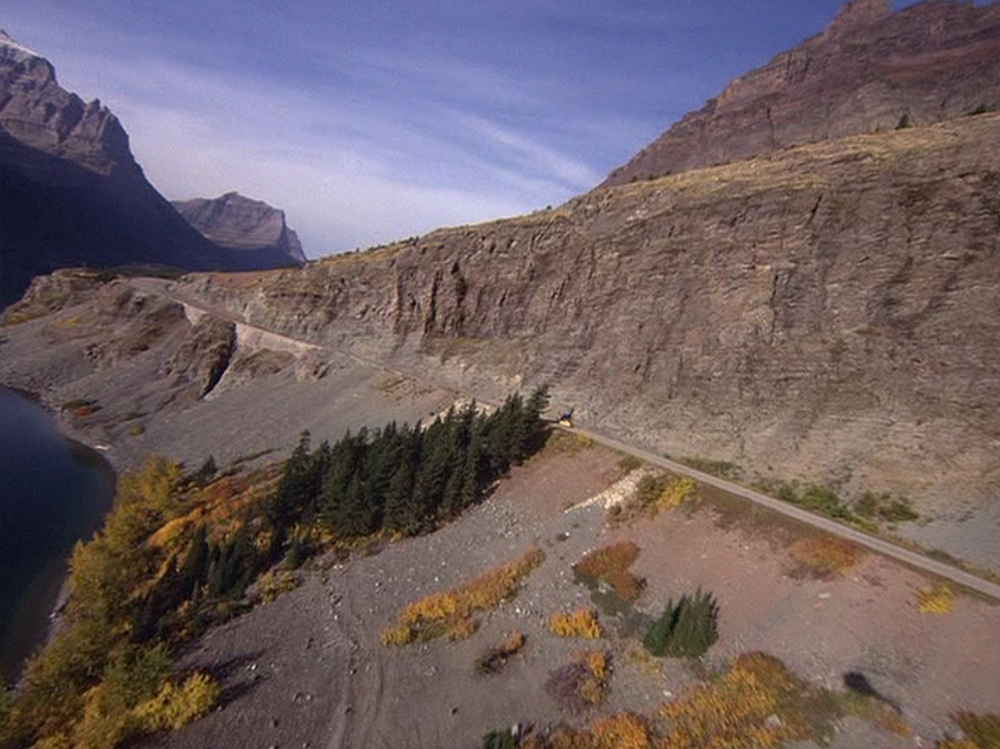
Fig. 5 - We approach again the Going-to-the-Sun Road from the same direction as in Fig. 2, from St. Mary Lake. The VW is passing the thin strand of evergreen which can be seen just right of center in Fig. 2.
The way the cut is done, the VW from the end of shot 3 nearly intersects with the VW in the beginning of shot 4 at an X formed by the roads crossing, which we would see if we had another crossfade. Instead, we've a cut. So, I've superimposed the two together to show their near convergence and how the eye moves now from the screen's middle to follow the VW up to the left. It's just a nice bit of editing that merits being noticed.

Fig. 6 - Not a crossfade in the film. This is my superimposition to show, if there had been a crossfade, the intersection that would have been formed of the roads, and a near convergence of the beetles.
At 1:13, the shadow of the helicopter passes behind the camera and we no longer see it.
Where the green ends and the belittling rock takes over, the shot tracks the car as it grips the road traveling between the jagged canyon wall and the blue lake mirroring the remote blue sky. The titles begin, the camera closing in on the little yellow Volkswagen and passing it at a virtual vanishing point at a curve in the road, an amazing conjunction artistically.
(1:20) The credit for "A Stanley Kubrick Film" enters the screen. The color used for the titles is a neon turquoise-aquamarine.
If you invert the color of the titles, you got much the same red and orange combination of the rug in the hallway outside Room 237 at the Overlook. In Eyes Wide Shut, Full Metal Jacket and Barry Lyndon the titles are a flat white on black. In A Clockwork Orange they were a flat white on two different tones of red as well as blue.
(1:25) Leading into the vanishing point curve, the title for Stanley Kubrick has just crested the mountains when Jack Nicholson's title (Jack Torrance) enters the screen and passes over the VW, the camera catching up with and passing the VW, an individual shown at the wheel.
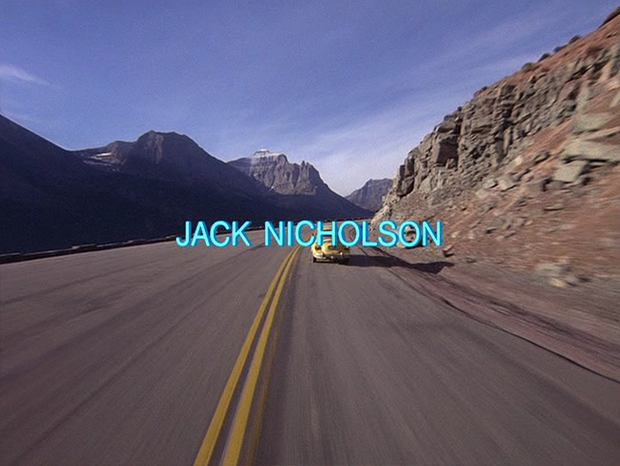
Fig. 8 - Coming to a vanishing point.
See the location taken from Google street view.
The shot is extraordinary, the helicopter putting us on the physical level of the VW, coming up from behind it as if it is another car, pulling to the left and passing as Shelley Duvall's name (Wendy Torrance) begins to enter the screen at about 1:30.

Fig. 9 - We are given the opportunity to glimpse a driver, forging a connection with Jack.
Soaring bird-like past the VW toward the lake, the music predatory with sounds suggestive of a raptor, the camera passes over what may be a cleared area with a possible rock embankment that gives the peculiar feeling that something may have been previously here, constructed by people, perhaps a building. This is unlikely but it seems a lost and haunting imprint of humans on the mountain, apart from the road, briefly tugging at us for recognition. Even if it is only illusory, aren't illusions also a part of the story.
The title for The Shining rises (1:36). As the camera leaves the road and the VW behind, the voiced ululation effect begins in the music.
The way this is done, the viewer, even though they don't see the raptor, senses the raptor and perhaps also experiences the raptor's peculiar interest in the vehicle, a kind of intimacy had that makes one forget for a second the aerial approach and gives the impression that there is instead a second car passing the VW, that the VW isn't alone on the road. Which I think is important psychologically, as Kubrick chooses not to show any other vehicles until immediately after this approach, the helicopter/raptor separating from the VW and zooming out over the lake. Our participation in the sensation of the unseen raptor's passing of the vehicle, in its interest, introduces the eerie feeling of the supernatural.
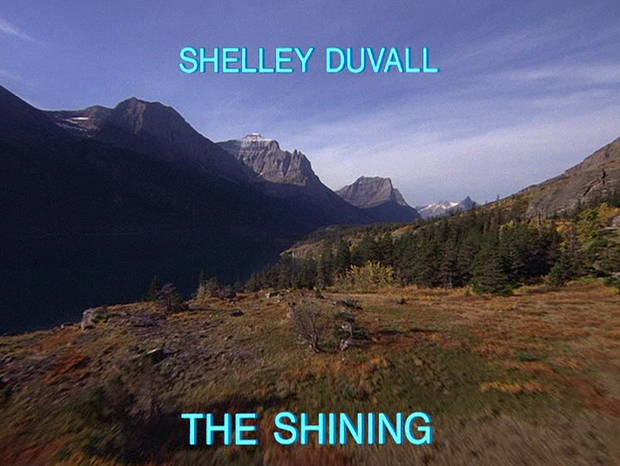
Fig. 10 - The bird/helicopter veers away and over the lake again.
TUNNELS AND RAINBOW ARCHES
After the vanishing point we return to the car which will momentarily and briefly disappear into a tunnel.
5 Aerial. (1:41)
The camera returns to track the car as it travels through yet more forest, Danny Lloyd's credit (Danny Torrance) entering the screen. The VW approaches a white station wagon that is pulled over on the side of the road. If a station wagon typically carries a family, we might wonder where in the hell a family would find help in this remote wilderness area. The title for Scatman Crothers (Dick Hallorann) enters at 1:47 and briefly eclipses both autos just as the VW reaches then passes the wagon. Barry Nelson's title (Stuart Ullman) enters at 1:52 and passes over the VW just as it disappears into a tunnel beyond. (1:55)
I have been told that this white wagon is a Ford Gran Torino. The last year for the production of the Torino was 1976. As a maze is prominent in the film, and the half-bull half-man Minotaur accompanies the maze in myth, we may want to consider that "gran torino" means great little bull. However, IMCDB gives the wagon as being possibly a 1970s Mercury Montego Villager, and it does seem to me the V impression in the engine's hood resembles the Montego more than the Gran Torino. So, toss out that bull association if that's the case.
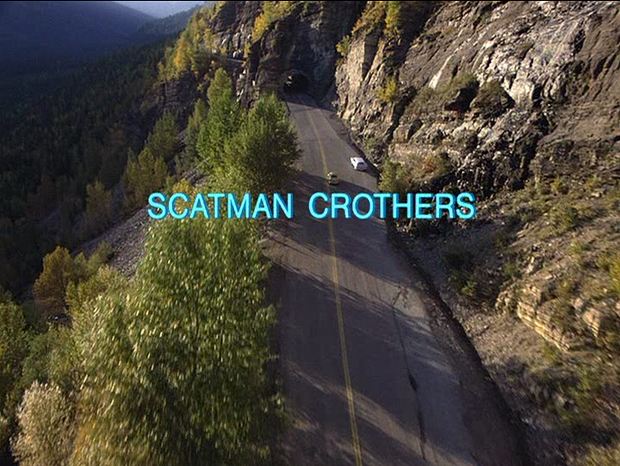
Fig. 11 - The VW approaches a tunnel and a white station wagon.
See the location taken from Google street view.
At 1:56 Phillip Stone's title (Delbert Grady) enters the screen. The VW leaves the tunnel and Joe Turkel's name (Lloyd the bartender) enters at about 2:02.
Octagonal and spherical splashes of sunlight ornament the camera lens entering an increasingly ghostly dialogue with the music and its twittering trills as the VW emerges from the dark tunnel and passes another car pulled to the left side of the road at what may be an emergency or scenic overlook rest station, its doors open, somewhat quieting the viewer's worries over the white station wagon, suggesting that the family station wagon, if it was in trouble and not simply stopped to view the scenery, has perhaps received help. The car is two-tone with a white roof, much like a police car of the time, as is its shape, but is likely not one as there is no signal light atop--still, for a viewer of the 70s a police car might be brought to mind. And here is yet another car that is approaching from the opposite direction, communicating that the mountain is not absolutely removed from civilization, though only four makes a veritable party of cars. This car that is approaching indeed may be a light color patrol car of some type, its lights barely discerned to be flashing, or this may very well be an optical illusion. The title for Anne Jackson (the Doctor) enters at 2:07 and passes over the cars, Kubrick cutting away just before the two cars pass each other.
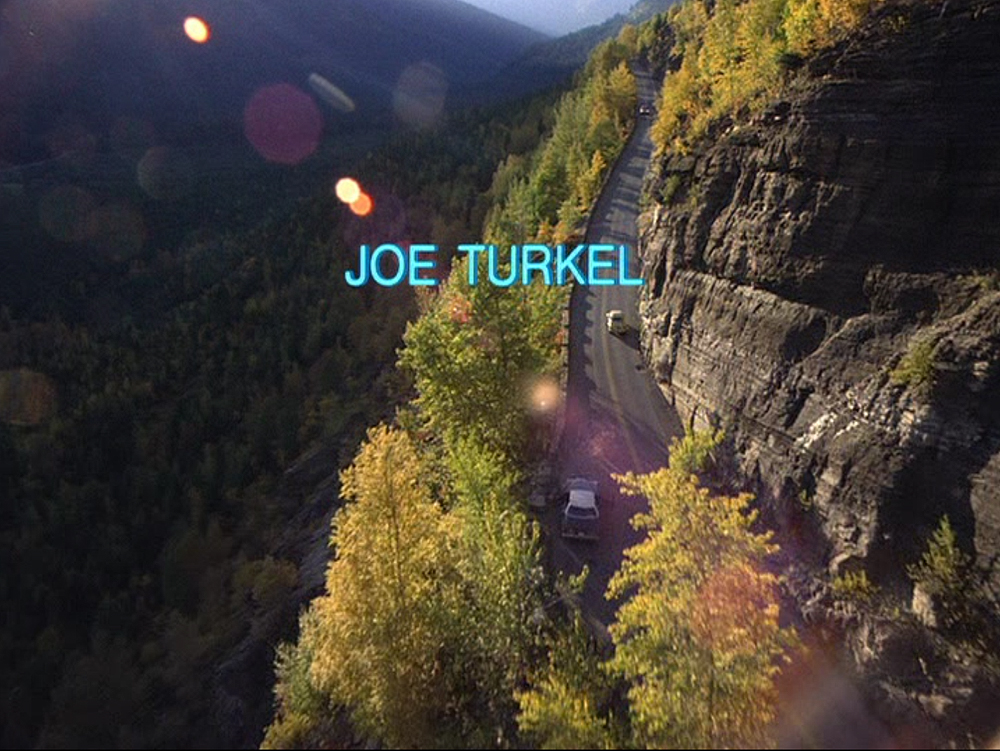
Fig. 12 - Having exited the tunnel, the VW passes a two tone sedan. See the location taken from Google street view.
The rainbow enters later graphically as a symbol but we already have the rainbow arch here, the splashes of rainbow color occurring just after the VW enters the dark tunnel and dissipating, after its emergence, with the Anne Jackson title. Incidentally, the two names that appear with the fullest rainbow-like display are Joe Turkel, the bartender, and Philip Stone who plays Delbert Grady, two characters who appear only to Jack in the film.

Fig. 13 - The credits over the tunnel.
Having studied the road, and plotted where these shots were made, the tunnel is the West Tunnel and is on a far removed section of the Going-to-the-Sun road from where the previous and following shots were filmed. The VW is moving east to west on the Going-to-the-Sun road. In real life, after having passed the Continental Divide, the road will eventually take a significant turn at a point called The Loop, after which the road travels back paralleling itself for a while then turns south. The West Tunnel is in an area where the road is more paralleling itself, after this loop, so if you have traveled east to west on the road you are then going west to east. The car in the film, however, is still moving east to west as it passes through the West Tunnel so it is traveling in the opposite direction on this road, though moving in the same compass direction at this point.
The park has St. Mary Lake, plus a Lower St. Mary Lake, and just as there are two St. Mary lakes, there are two tunnels, the East Tunnel and the West Tunnel, named respective of their positions on either side of the Continental Divide. The two tunnels are similar and the East Tunnel could be mistaken as the one through which the VW passes, being on the upper section of the highway. A difference is that the West Tunnel has parking spaces on both sides, before and after entering, whereas the East Tunnel only has parking on the west side.
Did you follow all that about the road and the tunnels? It's all right if you didn't because I have a map and further description over in the Closing Day section.
6 Aerial. (2:13)
Then we are passing through friendlier mountain grasslands, less imposing than the rocky canyon, the mountains less sterile and icily blue, but the music still ominous, the birdlike shrills wisped now with a hint of ghostly voices. This isn't going to be The Sound of Music, which also opens with a fabulous aerial shot zooming over the alpines and in on Julie Andrews swinging herself about in a circle, singing about going to the hills when her heart is lonely and finding the hills are alive with a music that makes her want to sing once more.
The title of Tony Burton (Larry Durkin) had entered with the cut. At 2:18 we have the title for Jan Harlan, the Executive Producer. At 2:23 we've the title for Stephen King, the movie based upon his novel. At 2:29 the title for The Producer Circle Company rises.
(2:30) Another car passes the yellow VW, also traveling in the opposite direction, a canoe or some type of boat strapped to its roof, and the music rises to a near shriek.
At 2:33 the screenplay title enters, written by Kubrick and Diane Johnson, hitting mid screen as Kubrick cuts to shot 7.

Fig. 14 - Further into the alpine green. See the location taken from Google street view.
7 Aerial. (2:36)
Cut to the VW traveling even further up, through patches of snow, the clouds building in the blue sky. The title for Stanley Kubrick as producer and director enters at 2:39. After it passes out of the screen we have just a moment before the next cut.

Fig. 15 - We are about to cut to the Overlook/Timberline.
See the location taken from Google street view.
The transition from shot 7 to shot 8 is a cut, not a cross fade, but I'm going to show a superimposition of just before the cut to just after, as Kubrick has edited it so the road and the VW delivers the eye directly into the parking lot of the Overlook, approaching from the left, which is in opposition to what we will view here of the actual road that leads up to the Timberline Lodge as the Overlook, it coming from the right.

Fig. 16 - This was not a crossfade. This is my own superimposition to show how the two mountains blend and how the road leads to the Overlook.
8 Aerial. (2:46)
The music levels out again as we cut to a gray mountaintop laced with white rivulets of snow, and see now an enormous lodge the same gray-brown as the mountain, a part of the mountain, the lodge situated at the tree line. At the top of the screen we can just make out the blur of the helicopter's rotor.
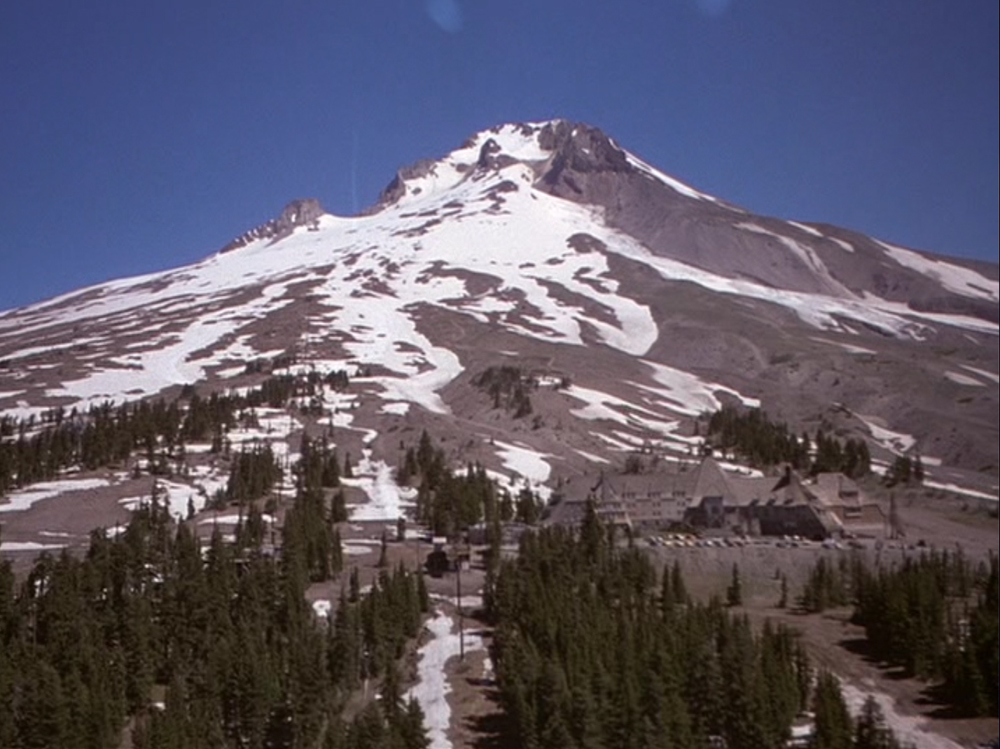
Fig. 17 - The Timberline/Overlook
Ghostly voices soaring skim the scene as we move in on the lodge and its parking lot and view outside a garage to the right a Snowcat that has left its track in a cleared area of earth. A number of cars are in the parking lot but not so many that a lodge this size would be even partly booked. We see a white station wagon that clearly resembles, and perhaps is, the station wagon the VW passed earlier on the mountain road. There is a light colored vehicle that perhaps bears some kind of insignia on its side and lights mounted on the top. If this is so, is it a Forestry Service vehicle? To the left can be seen not just one yellow VW but two. That there may be two could possibly have significance if we consider what I'd earlier written about the dual nature of the story in the film, the doubles (or near doubles) that we confront over and over again in Kubrick's work. To the right there is a battered red VW with different color wheel hubs and rear, which may be significant as toward the end of the film, in the "8 am" section, we see a red VW crushed by a Mack truck. The Torrance's VW in King's book was red.

Fig. 18 - The Overlook/Timberline with its Snowcat.
Several people can be seen moving about the cars in the lot.
Due the helicopter flying in from the left, we've observed on the left what appears to be a ski lift (it is the Timberline's ski lift) but the Overlook has no skiing, again something of which the viewer is as of yet unaware but is a plot point in the film. There are no winter sports at the Overlook as it is closed in winter.
Note that we don't observe the lodge's hedge maze in this shot. That is because the Timberline Lodge in Oregon, crafted during the depression, used for this and a certain few other exterior shots, possessed no maze; it is the sound stage version of the Overlook, its exterior modeled after this one but having a number of differences, which has the maze.
At this point the viewers aren't looking for a maze and are unaware of its absence. Later, trying to orient what is seen on the set with what is observed of the real Timberline/Overlook, the viewer can toy with the idea that the set maze perhaps rests behind the lodge, but as will be discussed later in the analysis this is impossible. But the question is raised and the question must happen. The question is supposed to happen. The film is full of questions that are supposed to happen. Kubrick has given just enough of a glimpse of the back area in this aerial, at the very last moment before the cut away, for us to see there isn't room for a maze behind the lodge. After this momentary glimpse, he cuts away before we get a more comprehensive view that makes us believe we've a complete understanding of the geography of the lodge. We are oriented, and we later build the lodge in our minds according to this initial orientation, disregarding all conflicts until they can't be ignored. This is typical Kubrick style.
For some viewers, when they can no longer ignore changes and disorientations concerning the lodge's exterior and its maze is when the entrance to the maze shifts position at the end of the film in shot 601.
THE NIETZSCHE STONE
I have wondered if the opening of The Shining was influenced by the Nietzsche Stone. I explore that subject in this post.
DIES IRAE
The music used for this scene is "Dies Irae", The Day of Wrath, a poem to do with the final day of judgment and once used in the Roman Catholic requiem mass, all souls summoned by the last trumpet to learn their eternal fate. Wendy Carlos Williams' version is based on Berlioz' Symphony Fantastique, in which "Dies Irae" appears in the 5th movement, parodied during a Witches' Sabbath.
The day of wrath, that day Will dissolve the world in ashes As foretold by David and the sibyl!
How much tremor there will be, when the judge will come, investigating everything strictly!
The trumpet, scattering a wondrous sound through the sepulchers of the regions, will summon all before the throne.
Death and nature will marvel, when the creature arises, to respond to the Judge.
The written book will be brought forth, in which all is contained, from which the world shall be judged.
When therefore the judge will sit, whatever hides will appear: nothing will remain unpunished.
What am I, miserable, then to say? Which patron to ask, when [even] the just may [only] hardly be sure? King of tremendous majesty, who freely savest those that have to be saved, save me, source of mercy.
Remember, merciful Jesus, that I am the cause of thy way: lest thou lose me in that day.
Seeking me, thou sat tired: thou redeemed [me] having suffered the Cross: let not so much hardship be lost.Just judge of revenge, give the gift of remission before the day of reckoning.
I sigh, like the guilty one: my face reddens in guilt: Spare the supplicating one, God.
Thou who absolved Mary, and heardest the robber, gavest hope to me, too.
My prayers are not worthy: however, thou, Good [Lord], do good, lest I am burned up by eternal fire.
Grant me a place among the sheep, and take me out from among the goats, setting me on the right side.
Once the cursed have been rebuked, sentenced to acrid flames: Call thou me with the blessed.
I meekly and humbly pray, [my] heart is as crushed as the ashes: perform the healing of mine end.
Tearful will be that day, on which from the ash arises the guilty man who is to be judged. Spare him therefore, God.
Merciful Lord Jesus, grant them rest. Amen.
"Dies Irae" is also notably used in Faust. In Faust, the character of Gretchen perceives the judgment as an absence of compassion, a severe and unrelenting condemnation when she is in need of forgiveness. She is hounded by guilt and an evil spirit that would desire to claim her soul through her despair and self-destruction.
With Faust, as well as the Berlioz version, "Dies Irae" is linked with Walpurgis Nacht, followed by it, and there's good reason for this as Berlioz' Symphony Fantastique was greatly influenced by Faust.
In Symphony Fantastique an artist overdoses with opium and experiences an hallucination in which he has murdered a woman who didn't requite his love. In the hallucination he is condemned to death, suffers over his guilt on the scaffold, and experiences his execution as an onlooker. His object of desire afterward appears at a Witches Sabbath where his funeral is held, and this too he also witnesses and its mocking of him.
The use of "Dies Irae", and knowledge of other prominent works in which it has appeared, adds an extra dimension to the film, and why The Shining should open with it merits special consideration as anticipating and informing the action.
Jack's alcoholism and abusiveness are the prime concerns in King's novel, coupled with the idea of the cycle of that abuse having been passed on generationally, Jack's father having been abusive. The novel psychologically explores Jack's attempt to restrain himself, to remake himself, his real burden of guilt over his own abuses, his feeling of no redemption, no mercy, and his response to that guilt and his inadequacies, which is to blame all else with a rage that defies logic. Kubrick chooses not to concentrate so much on Jack's history. For the most part, he eliminates history of the individuals preceding the point at which the film begins. Though he introduces us to Jack's abuse of Danny in "The Interview" section via Wendy, no other specific mention is made until subsequent Danny's encounter in Room 237 and Wendy's blaming of Jack for Danny's injury. After this, we get the story on Danny's injured arm from Jack as he spitefully unloads his version of the event on Lloyd, the ghostly bartender, enraged that he will ever be unable to escape his past, and we see full well how profoundly besieged by guilt Jack is, and susceptible to avoiding the burden of self-judgment through re-framing himself as the victim. In King's hands, the able psychological exploration of a disturbed individual eventually slippery speed slides away from his initial rational approach into muddied supernatural territory tricked out with an adult's version of Saturday morning Scooby-Doo phantasmagoria. Kubrick elevates the story from the secular thriller to a realm of almost sacred theater where individuals may look for answers in easy proverbs but the human grasp for moral cause and consequence, and dependence on culture for guidance, is ever subverted by a universe that is ultimately alien to human reason, and the use of "Dies Irae" is the kickstarter for that exploration.
Though nice to know the title and a bit of history of the music, for popular viewing one should be able to gain meaning without a warehouse of knowledge of the details. The poem does certainly suit the film, but Carlos' orchestration and how it fits with the shots is the fundamental dialogue.
A SIDE TRIP ON THE INCIDENTAL OF THE HELICOPTER AND THEN BACK TO THOUGHTS ON "DIES IRAE"
The helicopter is not that a significant concern to me, but have considered it anyway as it is allowed to appear.
As the camera follows the VW up the road to the vanishing point, at the film's beginning, is the famous revealing of the helicopter's shadow on the lower right side of the canyon. The road on which the VW is traveling is also famous and called "Going to the Sun". Helius is the latinized version of the Greek word for sun, helios. So that is a bit of fun, that we don't know the name of the road is "Going to the Sun", but we have, in the helicopter, a reference to the sun. But that's an assumption that would be wrong, for helicopter comes from the Greek helix, meaning spiral, and pteron, meaning wing. Without getting into all the etymology, pteron is akin to petition, a supplication or prayer, based on the idea of seeking, to rush or fly, and wing, feather. So it happens that one finds in a petition or prayer an early connection with birds and winged thought.
But, if in the helix we find spirals, so too in the sun, helios, we have cycles as well, the yearly revolution of the earth about it, and the evolution of the seasons as a spiritual metaphor for life.
Somehow, I shall now manage to segue back into "Dies Irae" and how it connects to the liturgy of yearly cycles.
Entering the High Holy Days: A Guide to Origins, Themes and Prayers notes on page 87:
...the magnificent U-netanah tokef (we shall ascribe holiness to this day) is chanted prior to the Kedushah....The concepts on which it is based come from Jewish apocalyptic literature and parallel Christian writings based on similar sources, the most famous of which is the "Dies Irae" (day of wrath)--found in the requiem mass--which offers a vivid description of the day of judgment for all humankind. In U-netanah tokef, however, the subject is not the final judgment but the much more immediate, yearly day of judgment--Rosh Hashannah.
The holiday of yearly judgment is also known as Yom Ha-Zikkaron, a day of remembrance, ZKR (I write more on ZKR, shannah, and The Shining here), or Yom Teruah, the day of sounding the shofar, which is observed in the horns of "Dies Irae".
Of the prayer, Unetaneh Tokef, Wikipedia provides a translation, which is in part below:
"Let us now relate the power of this day's holiness, for it is awesome and frightening. On it Your Kingship will be exalted; Your throne will be firmed with kindness and You will sit upon it in truth. It is true that You alone are the One Who judges, proves, knows, and bears witness; Who writes and seals, (counts and calculates); Who remembers all that was forgotten. You will open the Book of Chronicles-it will read itself, and everyone's signature is in it. The great shofar will be sounded and a still, thin sound will be heard. Angels will hasten, a trembling and terror will seize them-and they will say, 'Behold, it is the Day of Judgment, to muster the heavenly host for judgment!'-for even they cannot be vindicated in Your eyes in judgment."
"All mankind will pass before You like a flock of sheep. Like a shepherd pasturing his flock, making sheep pass under his staff, so shall You cause to pass, count, calculate, and consider the soul of all the living; and You shall apportion the destinies of all Your creatures and inscribe their verdict.
On Rosh Hashanah will be inscribed and on Yom Kippur will be sealed how many will pass from the earth and how many will be created; who will live and who will die; who will die at his predestined time and who before his time; who by water and who by fire, who by sword, who by beast, who by famine, who by thirst, who by upheaval, who by plague, who by strangling, and who by stoning. Who will rest and who will wander, who will live in harmony and who will be harried, who will enjoy tranquility and who will suffer, who will be impoverished and who will be enriched, who will be degraded and who will be exalted. But Repentance, Prayer, and Charity avert the severe Decree!"
As "Dies Irae" is partly based upon this prayer, it seemed appropriate to relate a portion. It was surprising to me that even in the happenstance of the helicopter, its spiral prayer--whether by design or coincidence--a line could be traced again to "Dies Irae", but then I've been contemplating "Dies Irae", have I not, because of Kubrick's choice of it informing the opening of the film with its bird-like twitters, the sweeps, and synthetic horns.
As the opening ends, the helicopter hovering over the lodge, one can see in the upper portion of the screen the circular, shadow whir of the "wings" deepening the sky's blue, the spiral of the helicopter blades touching just the top of the mountain which backdrops the lodge.
The leaves on the mountains are just beginning to turn when the yellow VW makes its trek to the lodge, and it seems to me there is every possibility that Jack's interview occurred in conjunction with Rosh Hashanah.
Kubrick's selection of "Dies Irae" for the opening music, and its relationship to Rosh Hashannah, or Yom Ha-Zikkaron, a day of remembrance, is a critical base for my analysis of the film.
I have since connected the helicopter with the helicopter in the film Himiko. Read The 1974 film Himiko and its relationship to why we view the helicopter in Kubrick's The Shining.
WHY THE SHINING AFTER ALL?
Much of what I've written about The Shining has been approaching it from the puzzle aspect, examining possible symbolic content, drawing out hidden details and reflecting upon those, and cross-referencing it with Kubrick's other films. Sometimes I am concerned that under such intense scrutiny, the emotional intelligence of the whole can be lost. However, though it is possible to lose an appreciation for heart with the dissection of its fabric, through immersion into all the particulars and a breaking down of them, a deeper appreciation can be had when one stands back and takes in again the full landscape. And it's here I begin. Not where I was in relationship to the film when I first viewed it, but what I feel about The Shining after much time spent walking about its maze.
I'm aware that there are people who look upon Kubrick's work as cold and distant. That was never my view of The Shining. Though I'd some struggles with it initially, it was, to me, ultimately humane in its reach for a fundamental reality beyond an often deceptive and fantasy-fulfillment surface gloss had in story-telling. So, too, does King's book, at least at its beginning, exhibit this humane reach. His writing style doesn't appeal to me, and never has, which is why I don't read King, but I did read The Shining many years ago, after having seen Kubrick's film, and was impressed then with the depth of King's acquaintance with the psychology of abuse, alcoholism and addiction, not just as it relates to Jack in his battle with alcoholism, but his family, friends and acquaintances as well, and King's ability to express that knowledge without losing the panorama of the individual and their unique experience.
Perhaps, that is partly what attracted Kubrick to the book. I can't say. There are other horror stories. There are other stories about abuse and alcoholism. My husband asked me, "Why this book, do you think? Why do you imagine Kubrick chose this book?" And it's a good question. Why would Kubrick choose King's The Shining as the story upon which to base his horror movie, especially when Kubrick would not only strip away great portions but reform what remained into something only vaguely similar. Perhaps it was the so human and yet uneasy ambiguity of King's characters, and in particular Jack, who is quite like Alex of A Clockwork Orange after all, as well as the Humbert of Lolita. Alex and Humbert are monsters, no doubt about it, and what makes them even more grotesque is their ambiguity. They are shot through with banality, and possessing such a self-righteous and peculiar self-pitying appreciation for their plight that they are made nearly amiable, no matter how much we may despise their actions. King's vision of Jack is less monstrous at first. Jack is aware of and horrified by his shortcomings, which makes him very much as likeable as the perverse Alex and Humbert due his confusion over his own vision of what he would like to be as versus the reality of his periodic rages and his contempt for all around him. However, instead of allowing Jack full responsibility for the monster he eventually gives in to being, King concocts a paranormal evil that grips Jack from outside, absolving him of his actions.
Humbert and Alex accept their perversity quite naturally and only struggle with checks and balances as forced upon them by society. Jack would kill as ruthlessly as Hal in 2001, who murdered and yet extracts buckets of soulful empathy with his singing "A Bicycle Built for Two" as his brain is shut down, the audience aware that Hal has been programmed for unconflicted treachery by virtue of his mechanical loyalty to the math that rules him. Hal sings, and is as afraid as mere mortals at the thought of losing himself and not being, and we struggle with esteeming him culpable or a victim. We can't forgive Humbert his abduction of Lolita, but James Mason is so entertainingly wretched that he is always eminently watchable. If only Alex would truly reform!--but even, at the end of A Clockwork Orange as he appears to revert to his amoral nature he does it with such loving gusto that his imagined Victorian audience surrounds him applauding, and so too many in the theater, however revolting his actions have been to them. With Alex and Hal, more so than Humbert, the question is whether the individual is responsible for their actions or if they operate as Clockwork Oranges--and the following understanding of a "clockwork orange" is had directly from the novel, which is, on Judgment Day does god feast on the juice of free will or the predestined fruit of mechanical law? That is the question Burgess posed in his book. In these films then there is had the idea of the final judgment and what exactly that means for men and women who way or may not have free will, whose actions may or may not be predestined.
Kubrick was perhaps attracted to King's book because he saw in Jack a person cut of the same cloth as so many of his anti-heroes, or saw it in Jack and the hotel, the two forming one person undivided, no longer obliged to recognize a matter of choice.
Kubrick, in reality, seems to me to have been truer to King's story of Jack than King was. King flinched. He wanted wholesale absolution for Jack in his possession by exterior spirits, and in the end evil had to destroy itself. Just as Kubrick scorned the ending of Burgess' novel in which Alex's pathology is blithely explained away as a product of youth, impulses to excesses from which he awakes as he grows a little older, so too does Kubrick avoid King's sentimentality. The audience is given no easy out in any of Kubrick's works.
Why Study the Film in Relationship to the Music?
Because the film's language is composed of visuals, music and dialogue. Music and visuals tell us what dialogue does not.
Why Study the Locations?
The following posts have screengrabs from Google Maps pinpointing the locations of the opening shots on Going-to-the-sun-road in the film:
St. Mary Lake
Serpentine Bends
Crossing the Field
Helicopter Takes a Pass
Entering the West tunnel
Exiting the West Tunnel
The East Tunnel (not used in the film)
After the West Tunnel
Last Shot of Glacier Park in the Opening.
Kubrick was not just showing us pretty mountain shots in order to communicate the beauty and isolation of the area. He had people in the field for months (at Glacier National Park and the Timberline) sending back footage. He was building a vocabulary, a story of scene. Studying the plotting of the locations of the shots in the Opening, along with the Closing Day shots, pinpoints a kind of psychological place for the lodge as being on the Continental Divide. The final crossfades from the Going-to-the-Sun Road to the lodge, in the Opening and on Closing day, are to either side of Logan's Pass, the Opening day scene showing the VW traveling from east to west, the Closing day footage showing the VW traveling from west to east. Logan's Pass is approximately at the Continental Divide. Though we are led to believe the hotel is in Colorado, it is symbolically situated on the Continental Divide.
Examining the Labyrinth Hidden in the Ascents
Examining the potential labyrinth that comes to light in the mapping of the shots of the ascent to The Overlook. The sequence pattern of walking a 7-fold unicursal Cretan labyrinth is 3-2-1-4 and 7-6-5 with 8 being the heart of the labyrinth. The plotting of Kubrick's shots on the road is 3-1-2-4 and 7-6-5 with the 8th shot being The Overlook. I look at this coincidence and the switch of the 1-2 to 2-1 in this post.
The Yellow VW
For more on the why of the yellow VW, its change of color from red, and its relationship to an Alex Coville painting, see this post.
Does the Opening of The Shining Pay Homage to L'Inhumaine?
I explore similarities between the opening of The Shining and the 1924 film L'Inhumaine, by L'Herbier, in the post Does the Opening of The Shining Pay Homage to L'Inhumaine?
In review, what has Kubrick given us in this section?
Jack drives up to the isolated Overlook. Some beautiful scenery. One of the more ominous musical scores ever put to film. One of the most stupendous opening shots ever on celluloid.
What's the teaser candy bait?
The parking lot. Two yellow VWs and the battered red VW.
What's the food for thought?
Dies Irae.
What's the deep infrastructure?
Continental divide.
First placed online 2007-2009 in loose form. Added all shots 2012. Approx 7589 words or 15 single-spaced pages. A 58 minute read at 130 wpm.
NEXT: THE INTERVIEW
Return to Table of Contents for "The Shining" analysis
Link to the main TOC page for all the analyses

